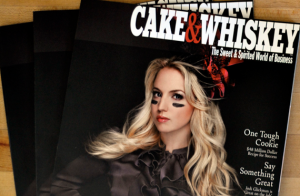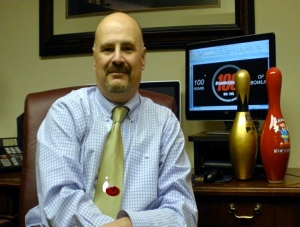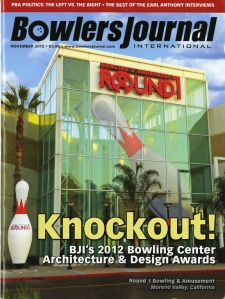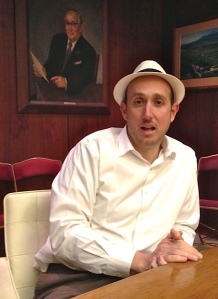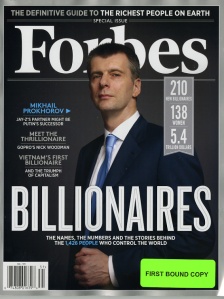 In 2008 when the business model for magazine media busted and technology burst like an exploding firecracker onto the scene, print floundered like a suffocating fish flopping helplessly on the steps of panic-stricken publishing companies all across the country. It was a bitter pill to swallow…this new age of digital and how print fit into its screen of potential.
In 2008 when the business model for magazine media busted and technology burst like an exploding firecracker onto the scene, print floundered like a suffocating fish flopping helplessly on the steps of panic-stricken publishing companies all across the country. It was a bitter pill to swallow…this new age of digital and how print fit into its screen of potential.
Even today, years later, some people are still trying to use electric shock to spark some kind of life into the old business model. But you can’t ever go back; therefore your only option is to go forward, unless of course you want to stagnate in the pool of status quo, which I don’t recommend.
Enter Business Black Box. They were one of those entities that almost crashed before they left the ground. They struggled with a business model, impressed on them by years of marketing and advertising experience, until one night the idea came to publisher, Geoff Wasserman, to start treating his print publication like a client and use his own experience to the magazine’s advantage.
Editor-in-Chief Jordana Megonigal had the editorial genius, he had the marketing experience and together they put together a new business model, one that works for their market. Partnerships with clients who interact with each other and the packages that Wasserman’s team puts together. From events to ad campaigns, Business Black Box has a model that, while it may not work nationally, for every magazine publisher, certainly works for them and bears much thought and consideration by the entire magazine media industry.
The potential is there. And as Geoff Wasserman put it so eloquently: “And we said that’s something you can do with plane crashes, when you listen to the black box, you find out what happened, mistakes or malfunctions, and you try to correct them the next time. Maybe we’re not in the business of saving lives, but we’re certainly in the business of making flights better in the future.”

 So strap yourself in and get ready for take-off as Mr. Magazine™ interviews the publisher of Business Black Box – Geoff Wasserman and its Editor-in-Chief – Jordana Megonigal. And hey, if the flight is a little bumpy, never fear – the Black Box is with you.
So strap yourself in and get ready for take-off as Mr. Magazine™ interviews the publisher of Business Black Box – Geoff Wasserman and its Editor-in-Chief – Jordana Megonigal. And hey, if the flight is a little bumpy, never fear – the Black Box is with you.
But first the sound-bites.
On the launch of Business Black Box: And so we really wanted to be a place where you could find all the answers, whether something was successful or a failure. And our adviser said, “Oh, so you want to be what a black box is to an airplane?”
On some of those almost-crash moments during the five years they spent trying to find their seat on the plane: From day one we had people saying, truly this is genuinely the best content and the best design publication that the market has ever seen and we were doing nothing with that. We weren’t leveraging that, we weren’t examining our distribution, we weren’t constantly evaluating and changing it, we weren’t listening.
On the moment when everything began to click – both editorially and on the marketing side: And we had talked about it about six months prior, before we made the decision to do what we did. About not doing this salutary burnout, but really focusing on exclusive partners. I think we had to get to the point where we were willing to let go, before we could really say, “OK, one last shot to see if it works.”
On whether “partnerships” might be the entire magazine media miracle for a new business model: Whether or not this would work on a national level, I’m not sure. But what we’ve found here in our market in the second and third tier markets like the Charleston and the Nashville markets, not the New Yorks and the Bostons, second tier cities; is that we are very relationship driven.
And now for the lightly edited transcript of the Mr. Magazine™ Interview with the Publisher of Business Black Box – Geoff Wasserman and Editor-in-Chief – Jordana Megonigal.
Samir Husni: Tell me the story of the launch of Business Black Box.
Jordana Megonigal: When we started five years ago, we went through that phase of what our magazine was going to be, what it was going to look like and what we were going to call it. And we were really stumped for a long time.
Our sister company is a marketing team and we had a lot of great brainpower behind the search for the name, but we just couldn’t find anything that really stuck. And we’re regional to the upstate of South Carolina, so we immediately wanted to crawl into the rut of City Name-Enter Here-Business Magazine, or something like that. But we didn’t want to do that. We didn’t want to be a typical business journal or a typical business magazine. And so we looked at what we wanted to be like. We wanted to be like a regionally focused Inc. or regionally focused Fast Company. And really focus on the entrepreneurs, small business owners and all the innovators that this area is becoming very, very famous for and we were meeting with one of our advisers, and he said, “Well, what do you want to do? What do you want to be?”
Geoff Wasserman: And it was a discussion where we said, “Forget revenue with moneyisms.” I mean, we were starting the magazine about a year ago and we had pretty much made that decision. And he said you just have to be true to what you want to be. And, whatever that is, does it distinguish you in the market? Or are you just going to be the same old, same old.
So we said, putting money aside; why are we really doing this?
Jordana Megonigal: We wanted to be the place, where if a business fell apart, because we didn’t necessarily see failure as a bad thing; you have to fail to want to get better, so if someone’s business fails or succeeds, we really wanted our magazine to be a place where they could look at that failure or success, almost like a case study, where someone could ask, “Well, what did they do to cause this result?” or “What happened in the market that made this occur.”
And so we really wanted to be a place where you could find all the answers, whether something was successful or a failure. And our adviser said, “Oh, so you want to be what a black box is to an airplane?”
Geoff Wasserman: And we said, “Yes! That’s what we want to be.” There’s a place for the other publications: the dailies and the weeklies and a couple of the other monthlies. They cover the who and the what. You know, so and so merged their companies together and it means this much growth. Everyone else is covering the who and the what.
So we felt like the why and the how was the stuff behind our mission statement: Our mission is to advise, connect and grow business. If it doesn’t advise, connect and grow business, we won’t put it in our magazine editorial. We said other people are doing the who and the what: here’s a two-page spread of all the business leaders at the cocktail parties. Who’s going where, and here’s the story about the merger, who was hired, and here’s who was promoted, but who’s talking about the company when they failed, when the merger didn’t go through, why, and what mistakes would that entrepreneur had wanted to share if they could be open about it, or what if the merger was successful because of these things.
So we said, “What if we could be that layer?” Everyone needs that layer. And this is the layer that’s really going to empower them to grow and maybe inspire them as well. And we said that’s something you can do with plane crashes, when you listen to the black box, you find out what happened, mistakes or malfunctions, and you try to correct them the next time. Maybe we’re not in the business of saving lives, but we’re certainly in the business of making flights better in the future.
Samir Husni: During those five years of flight, tell me some of the pleasantly surprising moments you had, and some of the close-to-crash moments.
Jordana Megonigal: The first four years were the crash.
Geoff Wasserman: Jordana really runs the publishing side of the magazine, but as the CEO of our marketing team, we have almost 25-30 folks. And we are a total marketing department and we interact with digital media for all our clients.
The first 3-4 years were very humbling because what we didn’t realize was; we really weren’t taking Jordana and the publishing side on as a true client. We were almost just assuming that because we know marketing and she knows magazines, it was all good. But we really weren’t taking it on as if it was a paid client. We did ourselves a disservice.
From day one we had people saying, truly this is genuinely the best content and the best design publication that the market has ever seen and we were doing nothing with that. We weren’t leveraging that, we weren’t examining our distribution, we weren’t constantly evaluating and changing it, we weren’t listening. We were listening to readership feedback, and that was always phenomenal, but we weren’t proactively asking what they’d like to see to drive it to the next level. We weren’t making any kind of correlation between revenue drivers and content, and not basing the two, but saying this content is obviously successful and we need to communicate to the people who make marketing and advertising decisions what the business community, what their audience is saying.
So we were doing a horrible job at marketing, but we were doing a phenomenal job designing, laying out and writing a very relevant publication. We had people coming to us left and right saying would you consider sponsoring this event because you guys are really good on Twitter and on social media. When you advertise an event, it really goes well. Would you consider covering us because you cover a story like no one else?
But for the first 3-4 years, we were almost in a bag, there was almost a sever between what we were doing and how we decided we needed to monetize it. So after about three and a half years, we had a wake-up call. We couldn’t retain salespeople because it was too hard to retain a salesperson when you only had 4 issues a year to sell. And we were trying to sell things we didn’t believe in. We didn’t believe in quarter-page ads and half-page ads in a local publication one-time. We were finding ourselves having to compromise on the magazine side to drive revenue. And what we truly believed as a value proposition for our marketing companies, which is we wouldn’t make media recommendations to a marketing and advertising client in a local market to advertise a quarter-page ad one time in a business publication. We would recommend that you have a steady presence year-round, closer to full-page ads and highly creative.
So we just stopped and we said if we’re going to do this, we’ve got to do on the marketing and sales side what we’ve done on the editorial and design side, which is excellence and stand by what we believe in, or go home.
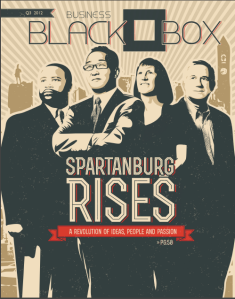 Samir Husni: When was the moment when everything clicked, between editorial and marketing?
Samir Husni: When was the moment when everything clicked, between editorial and marketing?
Geoff Wasserman: I remember distinctly. We have a leadership meeting periodically with leaders, and there are 5 of us who lead the two companies combined, and a few of our innovations that we do on the side. And we decided to meet offsite over a beer and we got to the part about Black Box and we all basically had the general consensus that we were tired of hearing that we’re the greatest magazine in the market and truly, I can’t put this thing down, and it looks phenomenal, and it’s inspired reading, but we’re not making money.
So we decided OK, what would it feel like if we made the next issue our last issue? We talked the plane crash out and we said OK, we can live with that. And then there was this stirring of how easy that really would be. Sure, there would be a void in the market. But life would go on. We had to decide did we really feel called to this thing? And if it was something that we felt passionate about, then it was time we stepped up to the plate. It’s obviously way easier to quit. Do we quit, or do we truly push through because it’s something we really believe in?
Jordana Megonigal: And we had talked about it about six months prior, before we made the decision to do what we did. About not doing this salutary burnout, but really focusing on exclusive partners. I think we had to get to the point where we were willing to let go, before we could really say, “OK, one last shot to see if it works.” I think that was our point, where we said we really don’t want to let it go, so let’s try one more thing. And that “one more thing” turned out to be the game changer. It tipped the entire table over and changed everything.
Samir Husni: Define that “one more thing” for me.
Jordana Megonigal: We said that we didn’t believe one-time ads, or running these small ads was what would make an ad work in a magazine. It wouldn’t give us the ROI that we needed. We knew that. Why would we waste our time and the advertisers’ time selling them? We had made a commitment from day one that we would never cross editorial and advertising. And that’s really hard to do in a bad economy, because people are willing to give you a little something if you’ll give them something. And we’d say, no, that’s not an option.
We knew most everyone else in our market was running 55-60% advertising to editorial. And we knew that wasn’t an option either because everyone raved about our content, they didn’t rave about the ads. We had these strongholds and we had to keep them.
So we created a package that kept those things in place. We decided on an exclusive number of partners, which meant that this page count would never exceed 30% ads. We would grow the magazine before we added partners.
So we had that exclusive number in place, we had the package in place that was full-size ads or higher, full-color, we handle the design and the campaign if they needed that, which included event by sponsorship, social media, photography; just an entire marketing package that people need. They think they’re buying an ad and then they get just an ad and it doesn’t quite work the way they thought it would. So we bulked up with a package behind it so it would have a true lasting effect for them.
Geoff Wasserman: And I think the realization was this is the way, at least in most global, regional markets; this is the way that magazines are sold in market. And it’s no secret that the industry is struggling and failing, so we were trying to have a successful publication inside a failing model. So we said if we’re going to go home, it’s not a “Hail Mary”. Because a “Hail Mary” is when you’re out of all your other plays, you’re running the same team, the same formula; you’re just throwing it all under one play. But you’re still in the same sixty minutes, the same grid, so we decided if this is going to work, then it really is literally going to be a game changer. These advertisers and readers don’t want 60% ads. Advertisers don’t want to be lost in the clutter, they want compelling and creative, but they don’t want to have to hire an agency and spend 20-30 grand on top of it.
We have to have it creative, but they don’t want to get charged for using another publication and we can’t hire a salesperson in this model and pay them enough to only sell ads. So we had to scrap them all and say, “OK, this is the paradigm we think advertisers and readers want. So let’s operate on that.” And if it works, we listen and we adapt it to what the market is telling us. All the changes, as much as we thought they were brilliant ideas, they really weren’t reactions to what advertisers were saying.
If you had half the content as other people do, ads would stand out. If you gave me a professional ad campaign that I can’t do on my own, that I can take somewhere else; boy, that would be a nice value. If you told me that as an attorney, my law firm would lock out all the other law firms in town and they could not advertise because I had the exclusive partnership. If you told me as a bank that I could lock out my competitors, all the things that people say can’t be done. Well, who said we can’t do that?
We put the numbers together and we said if we could sell 12 or 13 partnerships, let alone sell 120 partnerships, then we’ve got a new model. Not a new way to do the old model, but a new model that not only rights this ship, but lets us take that model and grow it in new markets which we’re looking at now. Then we can go into a new city like Charlotte, Charleston, Nashville or somewhere else, and say we’re bringing a business magazine to the table only if we can quietly presell 8, 9, 10 partnerships. Then we announce that we’re launched and we’re already profitable.
 Samir Husni: We all know that in 2008 the existing business model for magazines collapsed. And everyone is looking for a new model. And the partnership model, which seems to have worked very well for you in print, many are trying to do it with digital. So tell me a little bit about the power of print and this partnership and the power of print integrated. Because the traditional publisher’s job has changed; you’re not just selling space anymore. You’re selling a campaign, an entire event. Do you think these partnerships instead of advertising could be the foundation for a new national magazine media business model?
Samir Husni: We all know that in 2008 the existing business model for magazines collapsed. And everyone is looking for a new model. And the partnership model, which seems to have worked very well for you in print, many are trying to do it with digital. So tell me a little bit about the power of print and this partnership and the power of print integrated. Because the traditional publisher’s job has changed; you’re not just selling space anymore. You’re selling a campaign, an entire event. Do you think these partnerships instead of advertising could be the foundation for a new national magazine media business model?
Geoff Wasserman: I think what’s happening is, and it’s not us just leading the charge, by any means, but when we went through this decision, we went to a publishing conference in Atlanta the first year we started our magazine. See, for ten years we had been a regional marketing and advertising agency thinking about starting a publication.
At the conference on the very first day, the first speaker was a guy from a successful digital marketing agency from another market. And he wasn’t a publisher, but he was speaking to a roomful of publishers, and I was certainly out of place, because everyone in the room had had magazines and multiple publications in their publishing companies for years and over the last year or two had started to realize they needed to get more into offering total solutions for customers, in other words, not just print advertising, but how do I help my customer grow and reach audiences where they’re at, using digital media and print.
So he was speaking about how the industry was dying and if they don’t start doing more of what he does, they’ll die eventually. And I felt very inadequate when I first walked into the room and that set the tone for me the entire day, because I realized that I was the only guy there that had a full-service marketing agency and I had a great editor-in-chief and that was it.
By the end of the talk he was trying to help them understand how they could build what we already had. What he was saying was how you need to be not just a publisher, but be a digital agency/marketing solution for your clients. Admittedly, it took me a while. I’m not the brightest tool in the shed, but I think I catch on after a while.
So after three or four years we asked ourselves what is the strength that we have as a company? What’s the one thing we know we’re strong at, figure that out, and then use it.
What we realized was that we had a track record of helping companies grow. Oh, and by the way we have this magazine over here. So it wasn’t a traditional “let’s add digital” and try to convert print customers to digital, it was, for arguably the first four years of the magazine, that we had secured a lot of marketing clients by saying, “Mr. Marketing Client, we’ll handle your branding, your interactive, digital media and by the way, if you do all this we’ll also include a year of Black Box.
Then we said, “Wait a minute! Same paradigm, flip it.” Mr. Print Advertiser, the other guys will give you a print campaign and maybe a little digital; what if we come and help your business grow? And it’ll be a mix of print advertising, digital, social support; we’ll launch a partnership program, which is where we reach out to every single partner. And as a value added, give us the list of the ten customers that, in this market, you would love to have as customers, but you have never been able to form relationships with, because we have 10-15 years of relationships on the marketing side and also with our other partners.
And so over the last couple of months, we’ve been having coffee and lunches and connecting partner in banking with partner in law firm and helping them focus on relationship-building and growing their business. We got out of selling print and we didn’t transition into let’s sell print coupled with digital; we focused on how do we help partners grow their businesses and grow their market-shares. And what we realized was that we had some strengths that we could bring to the table.
Jordana Megonigal: Whether or not this would work on a national level, I’m not sure. But what we’ve found here in our market in the second and third tier markets like the Charleston and the Nashville markets, not the New Yorks and the Bostons, second tier cities; is that we are very relationship driven.
And so taking two different angles, sticking to our partners and our advertisers, those relationships are vital. And with us saying, “You don’t necessarily want a digital ad. You want people to see more of your business.” That’s the difference. It’s not just an ad buy; it’s about connecting your brand to the people who need to see it.
And on the partner side, we’ve done very well in the past year. Are we making those relationships extremely valuable to the point of almost invaluable? Well, I think everybody has renewed so far. On the partner side, I think we’ve got something that works very well in our market. I’m not sure it’s nationally feasible for someone else, but on the reader’s side, for the interactive and the print; that is something we’re highly focused on this year.
We kind of know where the trends are in our market, and now that we’ve righted the ship, we’re looking at what does a daily, or a weekly, or some consistent digital format look like for us, because it’s not going to look like someone else. We’re not going to replicate or copy. We’re going to figure out what does Black Box look like in that type of format. So we’re in discussion about that now. How are we targeting our social media? How are we looking at our website? We’re probably going to do a complete overhaul again this year.
Geoff Wasserman: Even our events have increased. We have the traditional local and regional publications that do the types of events where you come in, you get a breakfast or a lunch, you hear a speaker and hopefully you meet someone.
Our events have stepped up in number and in the type of events we do. Our events have always been the opposite of the traditional. That’s an old model that doesn’t work. People can get information any time they want. They want a highly-targeted reason to get together and a highly-targeted audience to connect with.
So the partnership program allowed us to identify people who are vested and have a vested interest in connecting and growing business together, and so then you have a handful of partners who understand and who are involved in advertising, not advertising buys. They’re involved because they all want to help their businesses grow, then you have the event and you bring them together for an hour and a half and it’s about introductions and connecting. It’s roundtable events versus linear me-speaking-to-you. It’s bringing a community of businesses together and letting them connect with each other.
So it’s a much more powerful and different focus than having the old model event of the dances and the chambers, especially in this economy. People are hungry for business, and business starts with relationships and getting a chance to expose your brand and that doesn’t happen with traditional models of advertising.
Samir Husni: Do you now feel at ease being on auto-pilot, or are you still digging into the Black Box?
Geoff Wasserman: I will tell you this, I will give Jordana the credit. Editorial-wise, she has always been, on every issue, the one saying, “How do we do better?” On the marketing side, I think about 60 days after we sold out, we had a five-year anniversary party where everyone was involved. We went through a period of about 45 days where we said let’s soak in this moment and let’s enjoy it. It’s the end of the year, so let’s just celebrate.
So we stopped for about a month. Then the first of the year we got going. We raised our prices again, we’re launching a second publication, we’re about halfway through our look into a new market, we’re expanding and we actually just announced that the next issue we’ll be adding 20% more content. That allows us 5 more partnerships and we’ve already sold out two of them. We have waiting lists which we’re going back to and selling those, so we’ll be sold out by next issue and up to five new partnerships.
We did what most people don’t do, which is stop and celebrate what you’ve built and then get back to work. Because if we don’t, it’s only a matter of time until someone else in the market is going to say look at them, why don’t we do it as well. And there’s some smart people in this market and some great brands. We took a month to just breathe and then got back to work.
Samir Husni: Jordana and Greg, what keeps you up at night?
Jordana Megonigal: We’ll probably both say kids keep us up at night. But when it comes to work, for me, I’m in the position of, I love what I do. I just adore my job. I love the people I work with and where I work. So what keeps me up at night more often than not and my husband will probably agree with this, is that I’m working and trying to get to that next level. I’ve cultivated five years of working consistently and trying to get that next level; asking myself what can we do and what can we do bigger and better. A year ago if you’d asked me that I would have said sales and paychecks. But now it’s that difference of reading something online and thinking, ‘Oh my gosh, we can take this and adapt it and we can use it,’ shooting emails back and forth on a Saturday. I think it’s just shutting down the brain now is far more difficult than before. It’s not such a stress level, but it’s a constant crutch and a constant drive.
Geoff Wasserman: What keeps us up at night has shifted from how do we find our place in the market and compare ourselves to it, versus compare ourselves to our potential. And every business struggles with that. And we finally made that shift of where we don’t stay up at night anymore comparing ourselves to others. Because we’re only going to be judged on the potential we’ve been given, the gifts and talents that God gave us. What have we done with them?
That’s what keeps me up at night is this thought that we have to do so much more, and not for the sake of just doing it. The second publication we’re about to launch is an annual and it is 35 extraordinary stories of entrepreneurs who made it through the start. The publication is called “Start.” It’s designed to share 35 unbelievably inspiring stories, not just so these 35 stories will be highlighted in this market and leverage their brand in the market through publication, but for the next Geoff and Jordana to say what it looked like to have a press release start. So we had this really cool idea to put together this collection of really inspiring stories that we could have read last year, that would have helped us to push through.
So I think what keeps us up at night has changed now, it’s not to be esoteric, and not focused on revenue, but focused more on impact and what are we passionate about. Let’s only do projects. We’ve proven to ourselves that we can do projects that we’re passionate about and we can monetize them. Let’s look at what our real potential is and let’s stay up at night dreaming about “what if.”
Samir Husni: Thank you.
![]()













